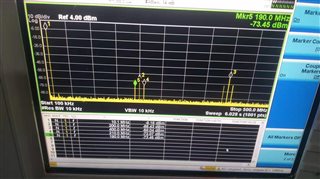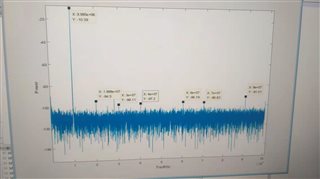Other Parts Discussed in Thread: LMH6552
hi expert.
ADC works in AC couple mode. schematic as follows, U1 represents LMH6552, and U2 represnets ADS42LB49.
FFT plot measured in above C1 blue circle point by Agilent spectrum analyzer as follows, ADC works in 200M sample rate, input signal is 10Mhz.
from FFT plot, we can see sample clock related spur 200M/400M. and it‘s mix product 190M/210M/390M/410M. and 10Mhz's HD2=20Mhz.

but FFT plot from ADS42LB49 sampled data。we can see many harmonic product. like 40M, 60M,70M,90M. i don't know why exist these 40M, 60M,70M,90M harmonic.
can you help analysis it?
 power
power

